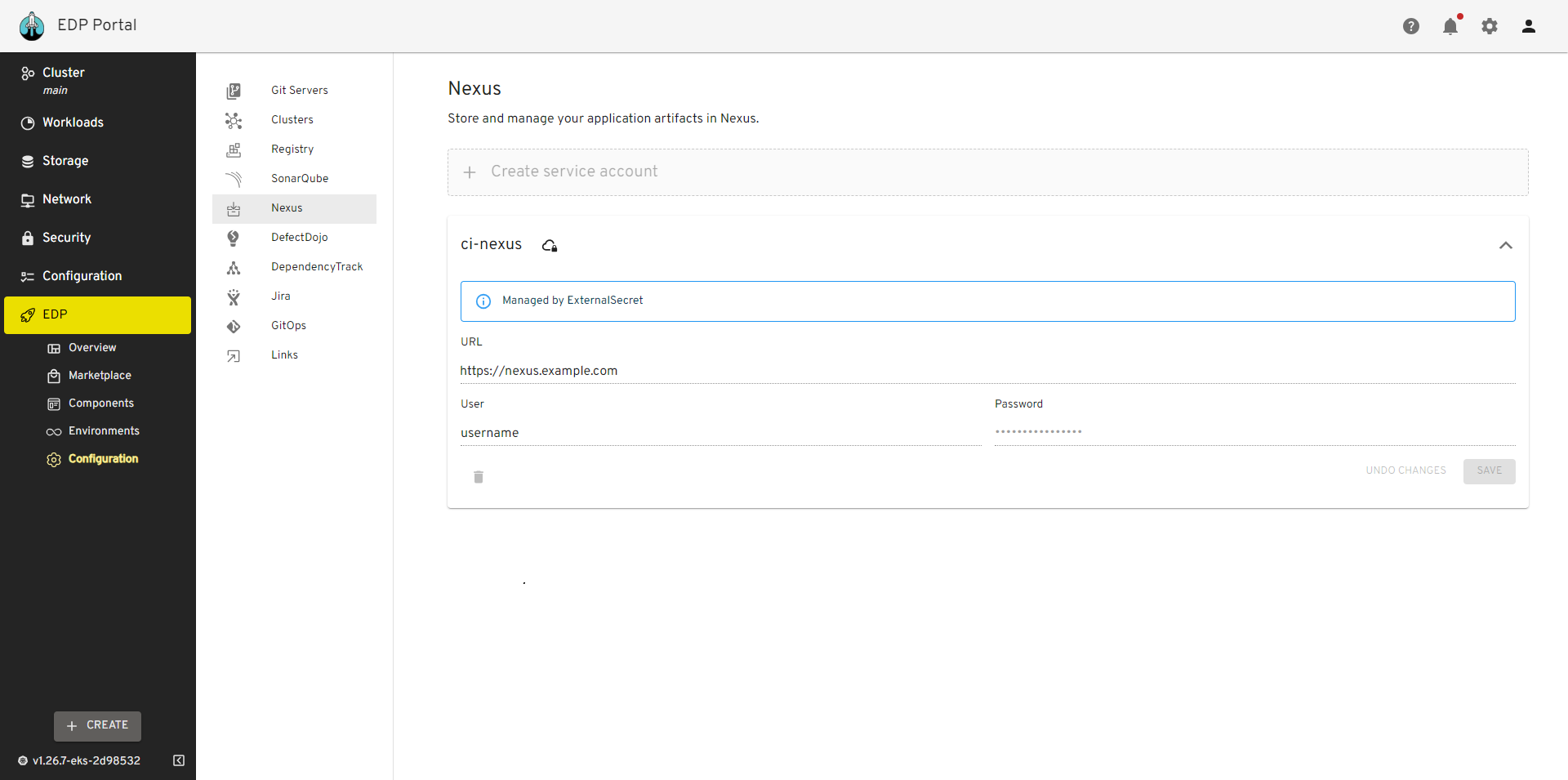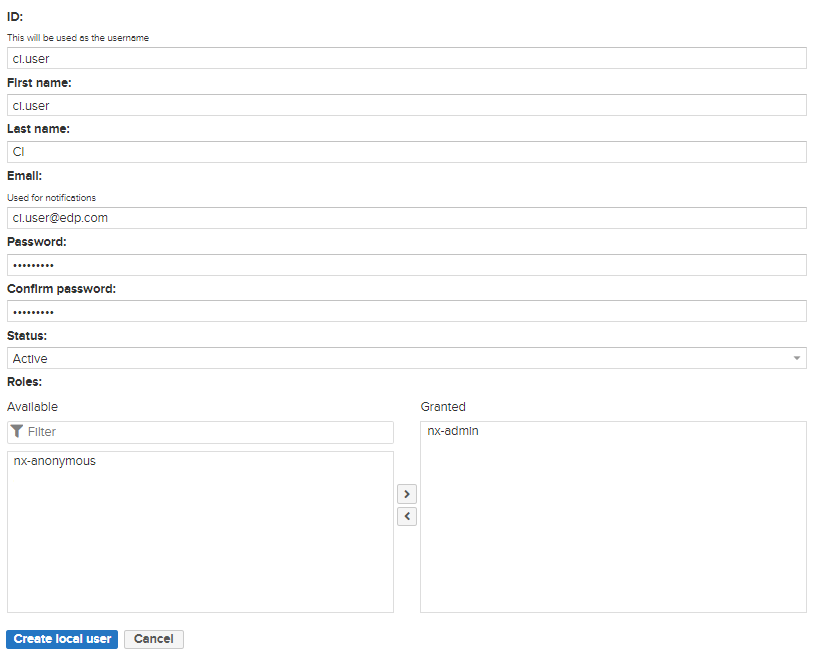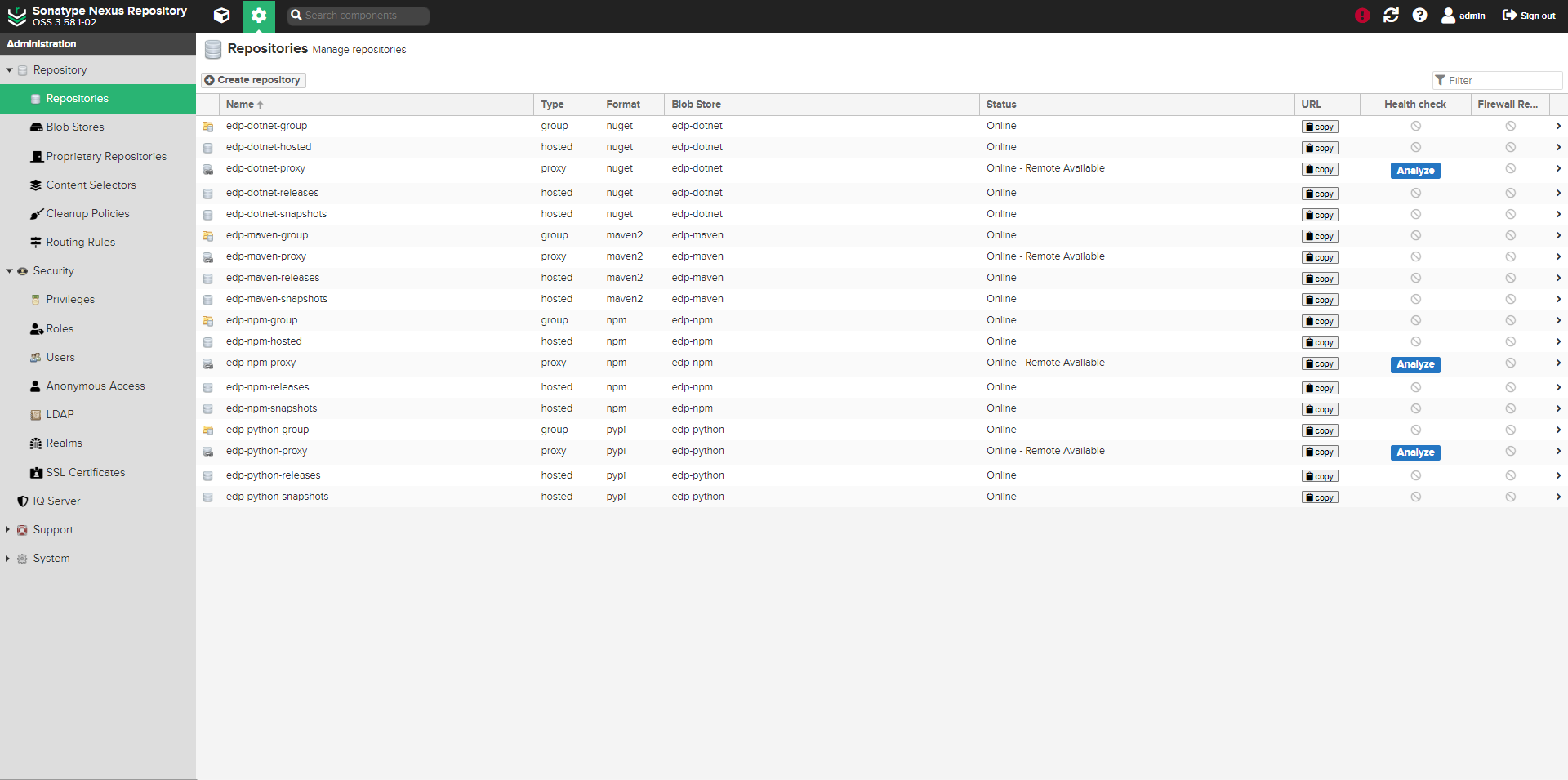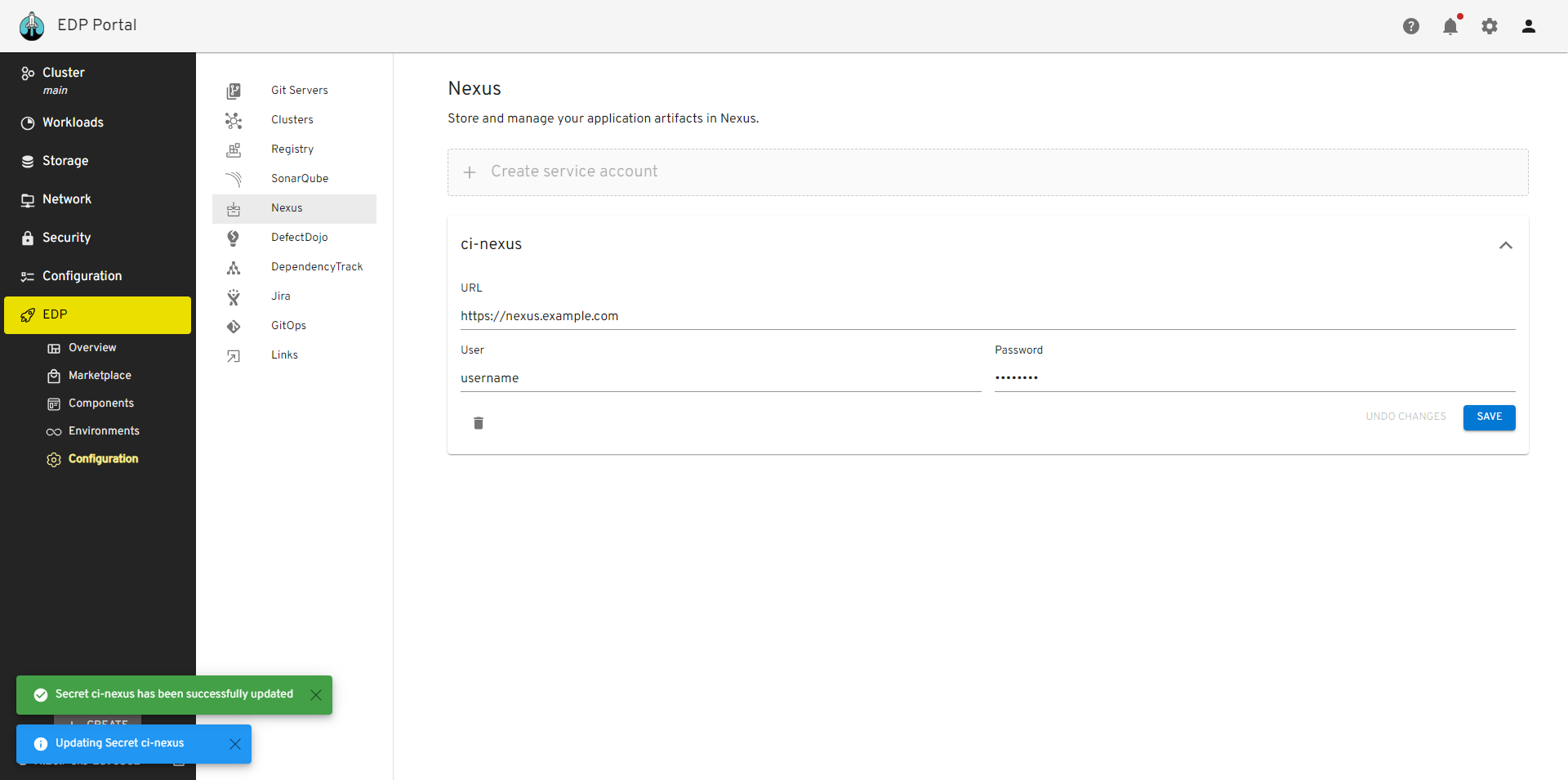Nexus Sonatype Integration⚓︎
This documentation guide provides comprehensive instructions for integrating Nexus with the EPAM Delivery Platform.
Info
In EDP release 3.5, we have changed the deployment strategy for the nexus-operator component, now it is not installed by default. The nexusURL parameter management has been transferred from the values.yaml file to Kubernetes secrets.
Prerequisites⚓︎
Before proceeding, ensure that you have the following prerequisites:
Installation⚓︎
To install Nexus with pre-defined templates, use the nexus-operator installed via Cluster Add-Ons approach.
Configuration⚓︎
To ensure strong authentication and accurate access control, creating a Nexus Sonatype service account with the name ci.user is crucial. This user serves as a unique identifier, facilitating connection with the EDP ecosystem.
To create the Nexus ci.userand define repository parameters follow the steps below:
-
Open the Nexus UI and navigate to
Server administration and configuration->Security->User. Click theCreate local userbutton to create a new user: -
Type the
ci-userusername, define an expiration period, and click theGeneratebutton to create the token: -
EDP relies on a predetermined repository naming convention all repository names are predefined. Navigate to
Server administration and configuration->Repository->Repositoriesin Nexus. You can only create a repository with the required language.a) Click Create a repository by selecting "maven2(proxy)" and set the name as "edp-maven-proxy". Enter the remote storage URL as "https://repo1.maven.org/maven2/". Save the configuration.
b) Click Create a repository by selecting "maven2(hosted)" and set the name as "edp-maven-snapshot". Change the Version policy to "snapshot". Save the configuration.
c) Click Create a repository by selecting "maven2(hosted)" and set the name as "edp-maven-releases". Change the Version policy to "release". Save the configuration.
d) Click Create a repository by selecting "maven2(group)" and set the name as "edp-maven-group". Change the Version policy to "release". Add repository to group. Save the configuration.
a) Click Create a repository by selecting "npm(proxy)" and set the name as "edp-npm-proxy". Enter the remote storage URL as "https://registry.npmjs.org". Save the configuration.
b) Click Create a repository by selecting "npm(hosted)" and set the name as "edp-npm-snapshot". Save the configuration.
c) Click Create a repository by selecting "npm(hosted)" and set the name as "edp-npm-releases". Save the configuration.
d) Click Create a repository by selecting "npm(hosted)" and set the name as "edp-npm-hosted". Save the configuration.
e) Click Create a repository by selecting "npm(group)" and set the name as "edp-npm-group". Add repository to group. Save the configuration.
a) Click Create a repository by selecting "nuget(proxy)" and set the name as "edp-dotnet-proxy". Select Protocol version NuGet V3. Enter the remote storage URL as "https://api.nuget.org/v3/index.json". Save the configuration.
b) Click Create a repository by selecting "nuget(hosted)" and set the name as "edp-dotnet-snapshot". Save the configuration.
c) Click Create a repository by selecting "nuget(hosted)" and set the name as "edp-dotnet-releases". Save the configuration.
d) Click Create a repository by selecting "nuget(hosted)" and set the name as "edp-dotnet-hosted". Save the configuration.
e) Click Create a repository by selecting "nuget(group)" and set the name as "edp-dotnet-group". Add repository to group. Save the configuration.
a) Click Create a repository by selecting "pypi(proxy)" and set the name as "edp-python-proxy". Enter the remote storage URL as "https://pypi.org". Save the configuration.
b) Click Create a repository by selecting "pypi(hosted)" and set the name as "edp-python-snapshot". Save the configuration.
c) Click Create a repository by selecting "pypi(hosted)" and set the name as "edp-python-releases". Save the configuration.
d) Click Create a repository by selecting "pypi(group)" and set the name as "edp-python-group". Add repository to group. Save the configuration.
-
Provision secrets using manifest, EDP Portal or with the externalSecrets operator
Go to EDP Portal -> EDP -> Configuration -> Nexus. Update or fill in the URL, nexus-user-id, nexus-user-password and click the Save button:
Go to EDP Portal -> EDP -> Configuration -> Nexus and see Managed by External Secret message.

More detail of External Secrets Operator Integration can found on the following page



